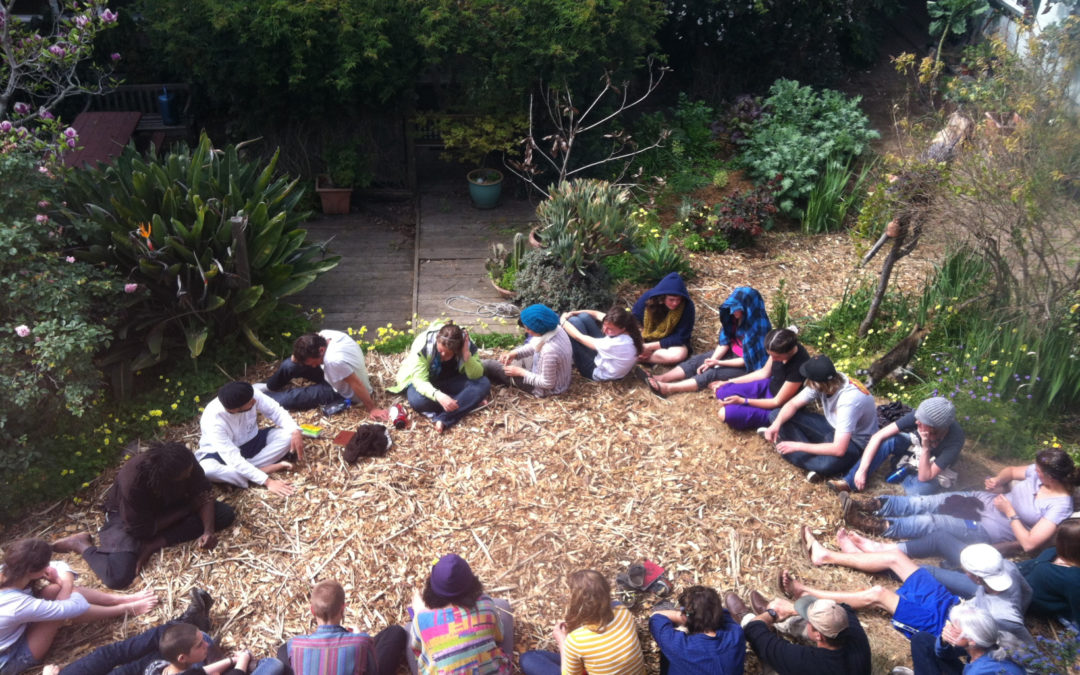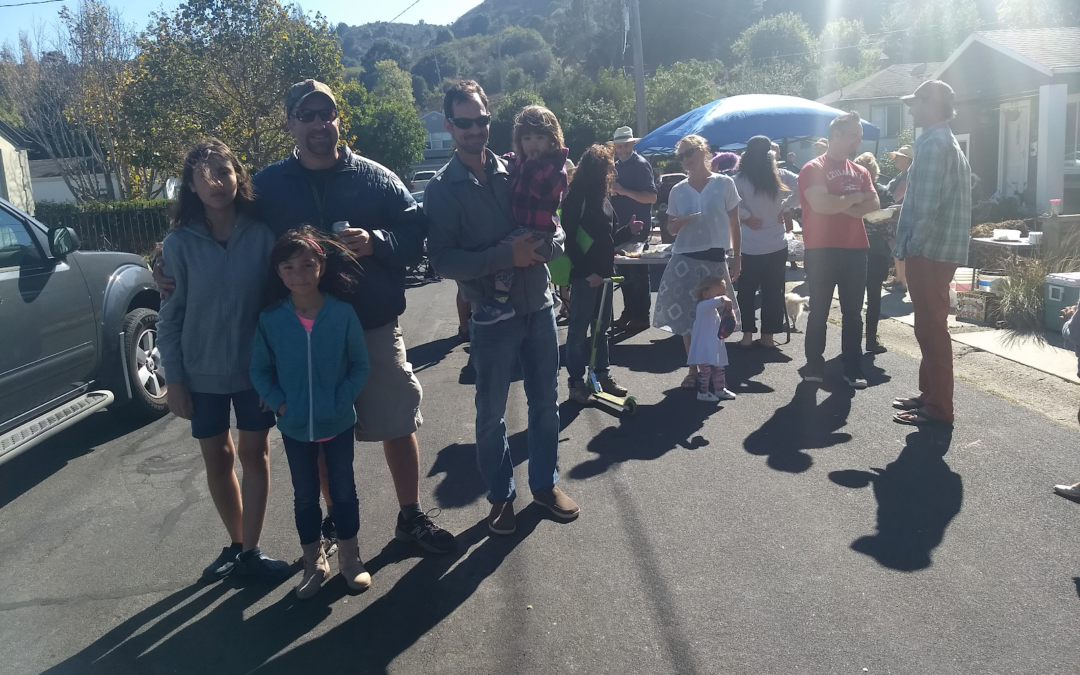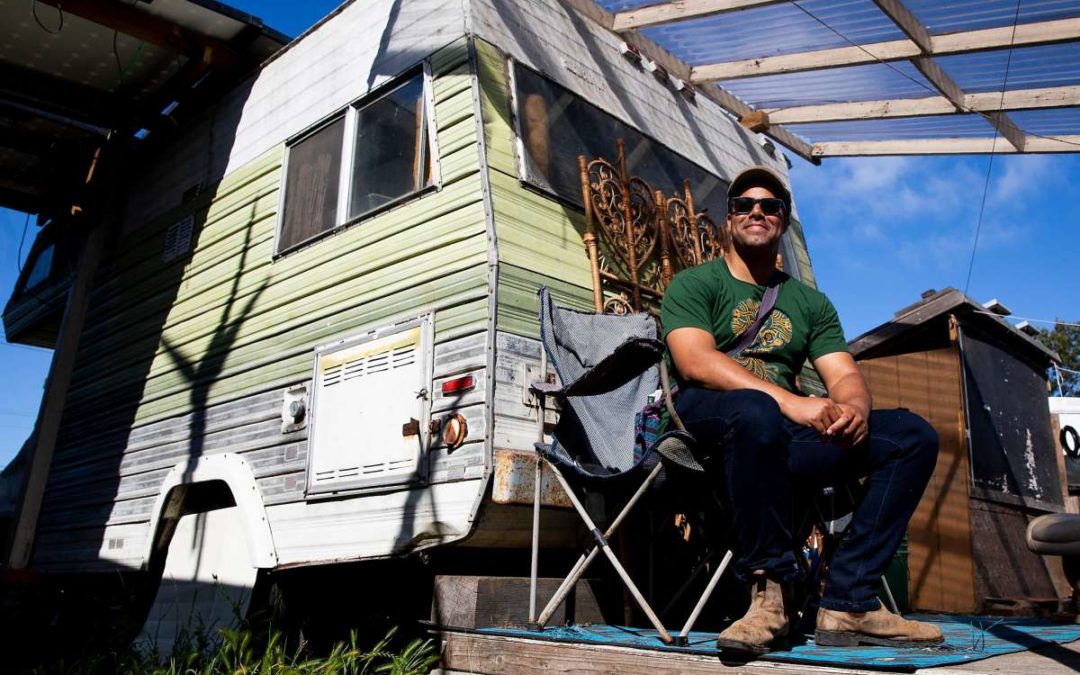
Neighborship
In the aftermath of the financial crisis, and the skyrocketing cost of living in the United States, many people turned to tiny homes and mobile homes as a means to survive. Tucked in a small lot at the edge of West Oakland lies a tiny home community known as Neighborship. Founded by Adam Garrett-Clark and other pedicab drivers in 2015, Neighborship is a resilience space in a variety of ways, from their energy resilience to their response to various legal and zoning challenges unfortunately common to many tiny home communities throughout the Bay Area.
Off-Grid Living
Neighborship is composed of several mobile homes, all with a variety of innovative climate solutions. The community is truly a resilience hub in that it is completely off-grid, with each home outfitted with its own solar panels and battery back up.
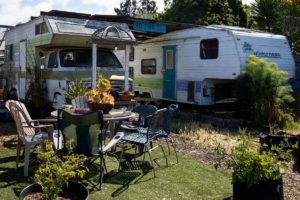
Jessica Christian/The Chronicle
The combination of the limited financial resources with limited energy from their batteries and solar panels have prompted the residents of Neighborship to become experts at energy conservation. All of the homes have energy efficient appliances, while the community also sports a wind turbine which is essential during prolonged periods of minimal sun visibility such as heavy smoke days.
The community is also food resilient. Built on a former junk yard with a history of toxic heavy metals in the soil, the residents have had to get creative with their gardening. All of their edible and medicinal plants are grown in raised beds and pots and are pollinated by the several hives of bees that live on site.
Despite their model resilience practices, the community is under constant threat of closure. The residents have become outspoken advocates for zoning code reform and leaders in the struggle to legalize tiny home communities, as highlighted in this recent San Francisco Chronicle article. Their local partners and collaborators in this struggle include the West Oakland Environmental Indicators Project, Sustainable Economies Law Center, Northern California Land Trust, and Bottom’s Up Community Garden.
Recently, their efforts have seen some success with Oakland’s New Ordinance to Increase Housing Affordability which would give communities like Neighborship a legal designation and protection. But these efforts are a double-edged sword: the requirements stipulated in the ordinance will increase financial burdens that could jeopardize their very affordability.
Community Asset Mapping
Inside Neighborship, there is an informal understanding of both the skills and vulnerabilities of the residents. Since many of the residents have been pedicab drivers, there is extensive use of bicycles and knowledge to prepare them. To keep things affordable, they are also skilled in water conservation and are constantly looking for new ways to save and store water.
Disaster preparedness is one area of growth for the community. The site does have a 72 hour supply of food and water, but they do not have sufficient supplies of other emergency materials such as masks, air filters, and radios. They used to meet on a regular basis to discuss disaster preparation, but since the start of the pandemic, these meetings have become less frequent. Recognizing these deficiencies, Adam is interested in formalizing disaster response procedures and adding capabilities to be able to respond to a variety of different emergencies.
Although their community faces many challenges, Neighborship stands as a model for how tiny homes can effectively fight the housing crisis, reduce greenhouse gas emissions, and increase community resilience.
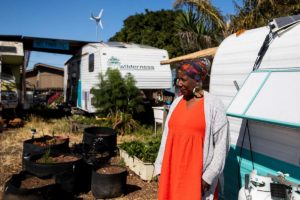
Jessica Christian/The Chronicle
